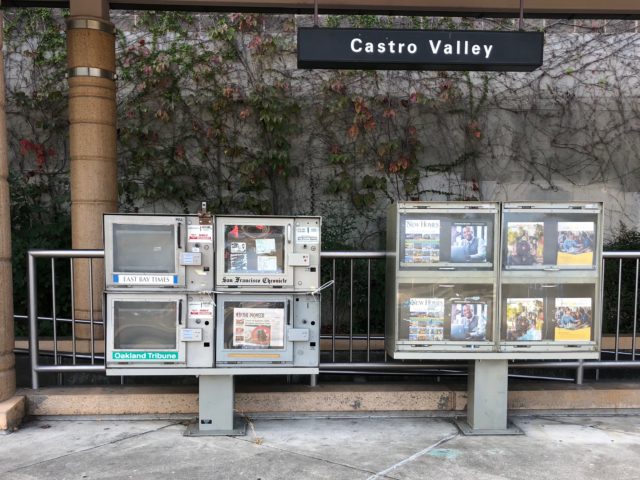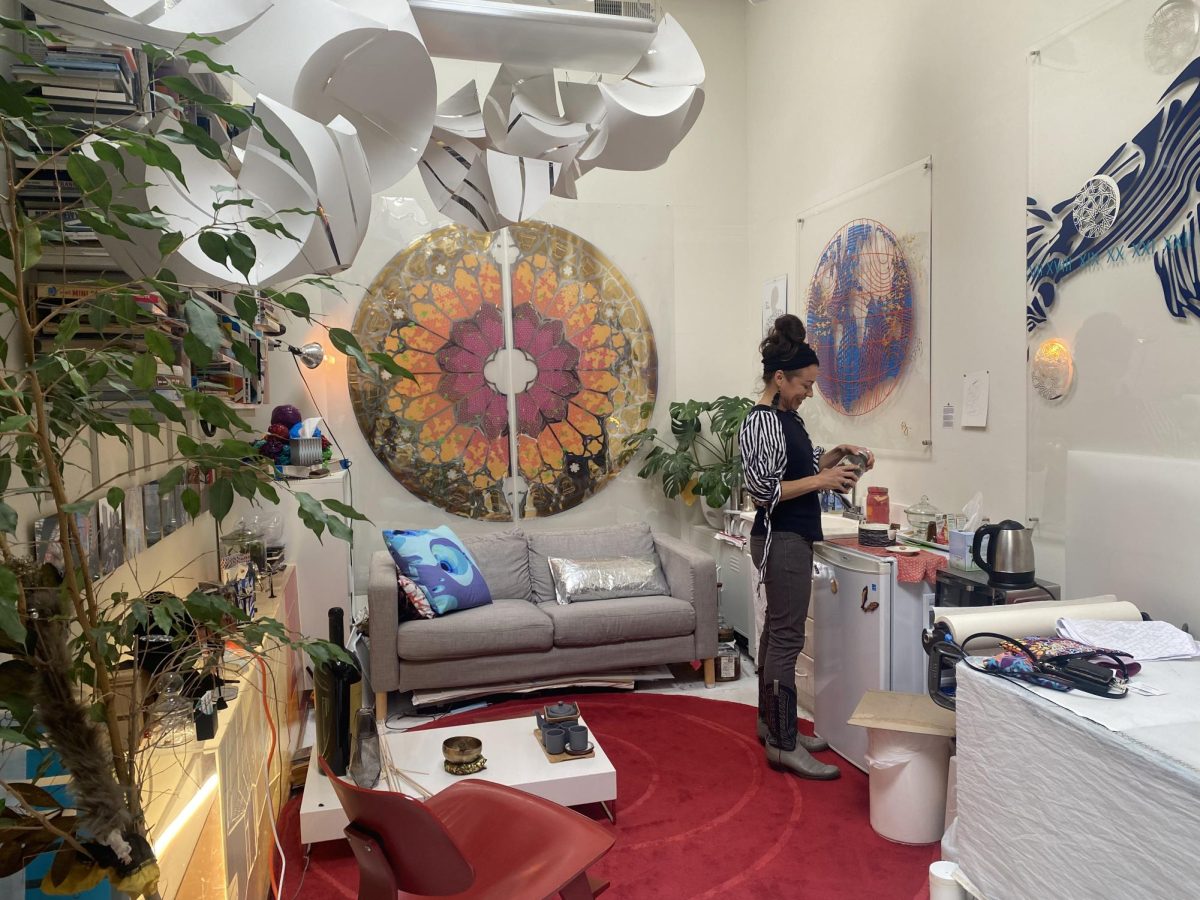What’s the best way to make money? Give things away for free. This seemingly counterintuitive business model, utilized by tech giants such as Google and Facebook, is a more benign version of the old bait-and-switch. Free social interaction, instantaneous answers to the most burning questions, cat videos on command—all they ask for in return are bits and bytes of information. Why then, is information more costly to acquire than it is to give away?
Back in the sepia-toned days of yonder, when Americans exchanged legal tender in the form of coins and paper for more paper—the daily paper—it was generally agreed that news was worth the price of admission. For most early morning commuters, a stop at the local newsstand while rushing to catch the train was worth the dollar fifty or so. Today, those newsstands sit vacant and most Americans don’t transact with paper, they do it in binary.
Digital news subscriptions for legacy news companies, like The New York Times and The Washington Post, have increased during the past year. Translated to dollar signs, that amounts to twenty-four million dollars in profits from digital subscriptions alone for The New York Times, as recently reported in that publication. But despite establishment news’s gains in digital subscriptions, many Americans still choose to skip the metaphorical newsstand, forgo costs, and get their news for free. According to a recent survey conducted by Pew Research Center, forty-five percent of American adults get their news from Facebook. This means almost half of the digital ad revenue associated with online news is going directly to Facebook and nearly half of American adults choose to get their news for free. But, why?
The answer may be found with that ever-elusive generation of industry disruptors: millennials.
“When it comes to news media, they’re used to getting the news for free,” explains Nolan Higdon, professor of history and communications at California State University East Bay. “They’ve lost absolute faith in institutions like the press.”
Higdon, who teaches millennials and just barely made the cut as one himself, is both a contributor and radio show co-host of Project Censored, a nonprofit, anti-censorship, and free press advocacy organization. To him, the reluctance to pay for news, and the interest in alternatives to establishment news, stems from larger systemic issues.
“These institutions haven’t served them well,” Higdon says of millennials. “At their youngest age, a lot of them are watching us go off to kill Iraqis for weapons of mass destruction that don’t exist. They’re watching their families get kicked out of homes because of Wall Street.”
The inherent sense of mistrust millennials feel is reflected in their news consumption habits.
“I know I can’t rely on one news source—it’s all biased because someone is gaining something from it,” asserts Alex Valenzuela, a twenty-three-year-old business major at SF State. “There’s a lack of journalistic integrity and a lot of desire to create clickbait type of articles.”
Valenzuela, who grew up with his father’s subscriptions to publications like The Los Angeles Times and National Geographic, still reads some print media, but only if he comes across it free of cost. Primarily, he taps and swipes his way from one news source to the next, until the variety suits his satisfaction. This is true of most millennials—their pragmatism manifests itself through their use of technology.
Yasmine Castaneda is a recent graduate from California State University East Bay’s Communications department. “News often will just come to you, simply by opening up social media apps or communicating with coworkers,” Castaneda says. “If you begin to really pay attention, people are almost always talking about a local or world current event.”
But these sources are not always reliable. To combat misinformation, Castaneda says she also gathers her news from multiple sources: local TV news before work, and social media throughout the day.
News-as-a-business has borrowed from the world of fintech (financial technologies). Publications offer free, limited digital access to readers, followed by paywalls to encourage digital subscriptions. But users are just not “hooked.” Author Nir Eyal explores the relationship between consumer behavior and technology in his book, Hooked: How to Build Habit Forming Products. He proposes that four vital factors must be present to build consumer habits: A trigger, an action, a reward, and an investment. Eyal calls this the hooked model. Each element keeps the loop going. When applied to news, for some people, the missing pieces are reward and investment.
“I enjoy news, but I’m not going to be reading news the entire day,” Valenzuela says. “It’s a momentary thing. I don’t think anybody re-reads news. I don’t see myself reading an article one day, and then a month passes and going back to it.” For this business major, the return on investment is just not there.
Some millennials are more worried about the permanence and reusability of the good they receive.
“Music, which I’m playing constantly throughout the whole day, I’m only paying five dollars for and it’s something that I enjoy,” says nineteen-year-old T’Andre White, an undecided major student at SF State.
White points to a lack of objectivity and transparency in legacy news as a major reason why he does not pay for news. Instead, he prefers the clearly disclosed opinion of YouTube personalities. A favorite of his is Philip Defranco.
This new breed of news personalities directly competes with establishment media for viewership. But they’re not all trustworthy. Professor Higdon refers to far-right pundit and conspiracy theorist Alex Jones of InfoWars as the bane of his existence. Jones’s proclivity to hype absurd, often blatantly false, topics and monetize them to their full potential has built him a massive and loyal fanbase. And it’s not just Jones. These types of faux news commentators exist all along the political spectrum, left and right wing.
White says that when he watches YouTubers, he tries to keep the potential for bias in mind. “They always tell you beforehand, ‘This is how I feel about it, don’t feel about it like this, you guys can do with that what you want.’”
To some, the conflation of news with commentary is reason enough to pay for news.
“Advertising revenue (the ‘free model’) does not encourage investigative journalism,” says Kenneth Leonard, a professor of agricultural and resource economics at the University of Maryland. “Investigative journalists don’t just communicate the story well—they make it. If the truth is hidden, bringing it out is sort of ‘making it.’ This is true both when journalist go and interview marginalized people and when they uncover the truths about powerful people.”
Leonard, who subscribes to several online and print publications including The Washington Post and The New York Times, emphasizes news a necessary, non-elastic good.
“I think we need to pay for the institutions that keep our country whole,” Leonard explains. “In Germany, the government makes you give money to your church by adding it to your tax bill and then giving it to the church. They do the same thing for the press. They add a ‘press’ charge to your tax bill and then distribute the money to the press. We could do this for many things that help all Americans, including art and music. But we don’t.”
“We’ve decided since the 1970s that everything is going to be weighed on the value of whether or not people will purchase it,” Higdon says. “News doesn’t work like that. News is uncomfortable truths. News is something that is essential. It’s not something people necessarily want to consume, it’s something they have to consume. So it doesn’t work well with a lot of these economic models.”






